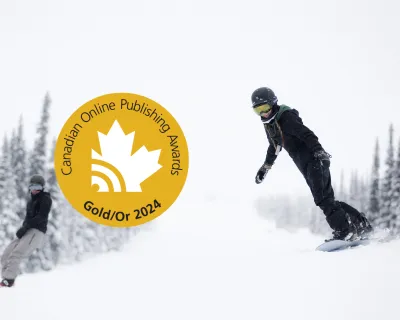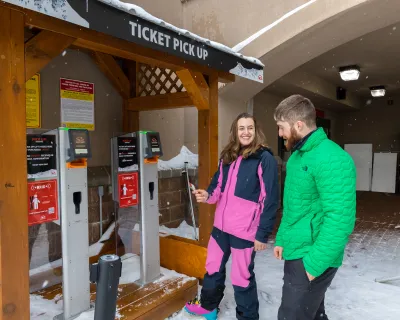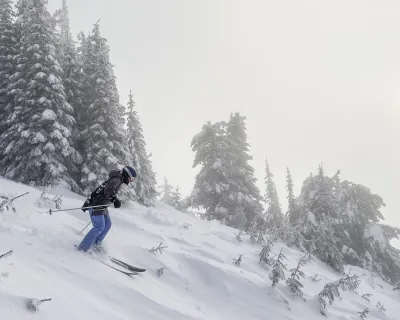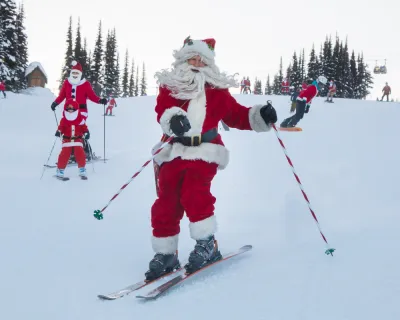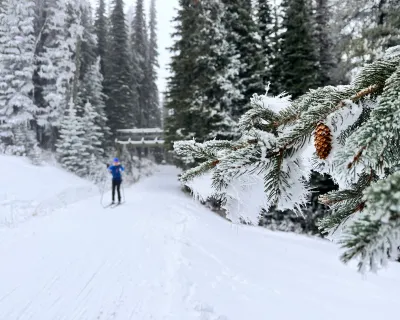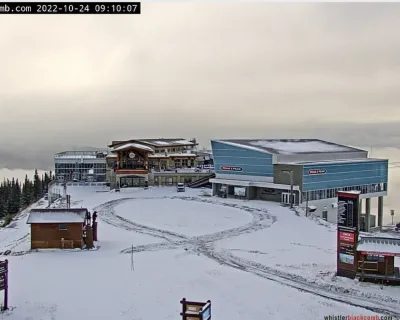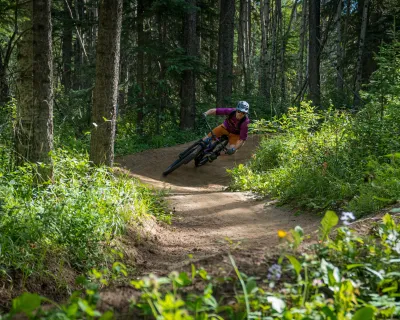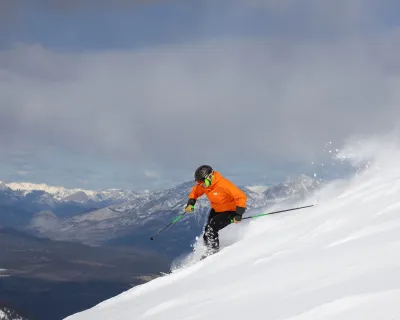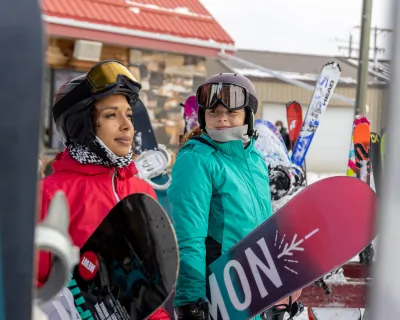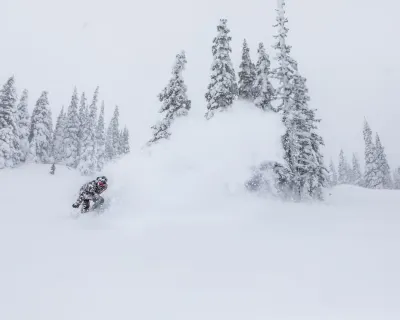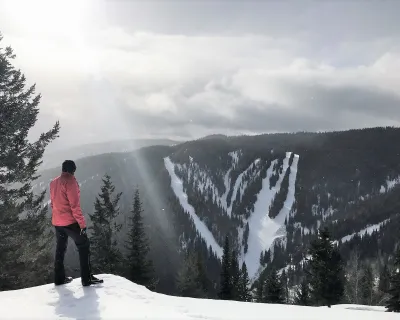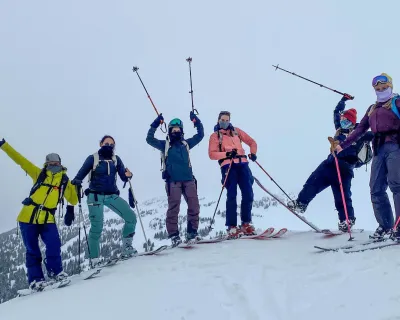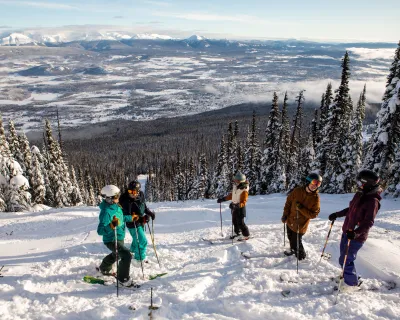
Then and now: Whistler Blackcomb
Whistler Blackcomb: Celebrating 50 years of powder, personality and vertical
It’s fun to watch people as they step into the PEAK 2 PEAK gondola at Whistler Blackcomb for the first time. Gliding with ease from one mountain peak to another, they stare at the three-kilometre expanse between the towers on each mountain and the 436 metres to Fitzsimmons Valley below.
Step back into pre-1997, and even though the two resorts shared a common village, they were worlds apart. Whistler was the old school ski resort while the newer Blackcomb was its free-spirited, anything goes, neighbour.
This year it celebrates its 50th year and back to back accolades as the top ski resort in 2015 and heading into 2016 by Ski magazine readers.
It all started in 1960 with a few Vancouver businessmen led by Franz Wilhelmsen. He dreamed of bringing the 1968 Olympics to British Columbia. They quickly set about acquiring the perfect mountain, renamed it Whistler in honour of the marmot which whistles to communicate and made the bid for the games. And failed.
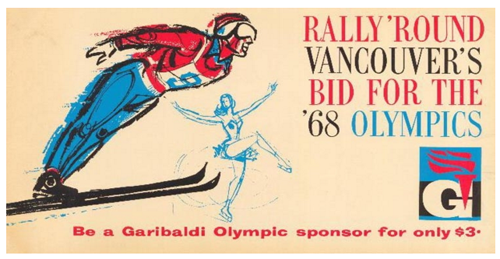
Photo by the Whistler Museum
No big deal, they’d try again. Meanwhile, they officially opened Whistler to the public in February 1966 with a silver four-man gondola, one double chair, two T-Bars, a day lodge and the most vertical drop in a North American ski resort. But back then they didn’t have sophisticated grooming machines and the moguls were big. Ornulf Johnsen, Whistler Mountain's first ski school director, said people would arrive, look at the skiers bouncing off the moguls, then leave. But not everyone left.
Whistler’s reputation for big vertical and deep powder brought the ski bums of the ‘70s. It was a relaxed culture of hippies smoking pot who’d rather ski than work. The locals called them the UIC (Unemployment Insurance Commission) Ski Team.
Whistler and Blackcomb – a rivalry is born
The village continued to grow but it was unorganized. Traffic jams on the highway turned into parking lot snarls that turned into long ticket lines and longer lift lines. To frustrate the owners further, their bids for the 1976 and 1980 Olympics missed the mark.
Al Raine and his wife, Olympian, Nancy Greene, stepped up to design the European-style ski village that we enjoy today. Repurposing the Whistler landfill as a pedestrian village was seen as visionary. The fresh, new village opened in 1980 - the same year the rowdy neighbour named Blackcomb moved in.
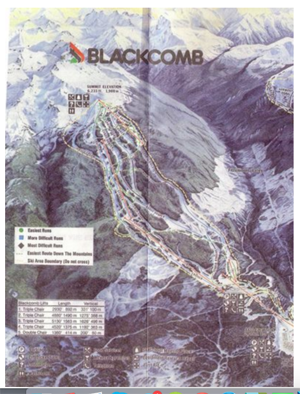
Whistler's first rival, Blackcomb.
Photo by the Whistler Museum
It was instant rivalry.
Blackcomb opened with five triple chairs and an additional 1,240 vertical metres of skiing. So, Whistler developed a new network of runs on the northern flanks. When Blackcomb installed the 7th Heaven T-Bar (rumoured to be stolen in the middle of the night from mothballed Fortress Mountain in Alberta), it created a vertical mile of skiing and boarding. So, Whistler countered with the Peak Chair taking skiers to more vertical.
The competition wasn’t just in vert and chair count. Blackcomb didn’t have the slopes like Whistler but they had customer service. They’d serve coffee to the folks in line then sweep the windshields at the end of the day. Whistler would watch and do the same.
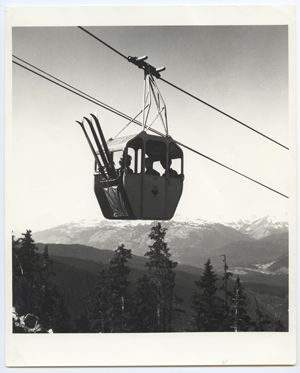
The early gondola on Whistler Mountain.
Photo by Whistler Blackcomb
Oh, did we mention boarders at Whistler? No. Just skiers. Snowboarding was not allowed at Whistler but being a lover of the new and the wild, Blackcomb welcomed the boarders. While Whistler hosted the downhill racers from around the world on its fast and straight trails, the freestylers, the boarders and the people who wanted to combine skiing with a party were living it up on the spidery trails at Blackcomb.
Merging into a mega resort
The rivalry stopped in 1989, long enough for the entire population of the village to cheer on local downhill racer, Rob Boyd as he won the World Cup race in his hometown.
Then in 1997 the announcement of something massive happened. Whistler Mountain Ski Corporation and Intrawest Corporation (owners of Blackcomb at the time) merged to create the mega resort, Whistler Blackcomb.
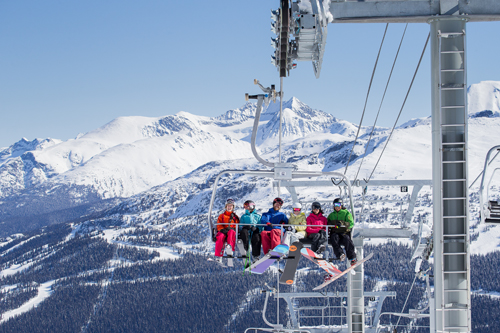
Photo by Paul Morrison
Things were looking good. The economy was booming, the village was expanding in an orderly fashion and over 1,100 acres of “inbound backcountry” terrain was added to bring the total acreage of snow- covered bliss to 8,171 acres - the largest ski area in North America.
Big news arrived on the morning of July 2, 2003. After 40 years, Whistler and Vancouver won the bid to host the 2010 Olympics. The resort and the slopes were prepping for the event but one thing was missing. The two mountains never felt unified. Hugh Smythe who had been linked to both properties since the beginning came up with a crazy idea. Why not connect the two peaks with a big gondola.
PEAK 2 PEAK ambitions
It was a fantastic idea met with accolades and opposition but after roughly $51 million, the PEAK 2 PEAK gondola opened in 2008. It redefined the winter and summer experience creating countless ways for people to enjoy the beauty and the bounty.

Photo by Paul Morrison
When Whistler finally hosted the Olympics 50 years after Franz Wilhelmsen first walked the slopes, it was heralded to be one of the best Olympic villages ever. Who can forget watching Jon Montgomery strut through Whistler Village and chug back a jug of beer a fan handed him. Classic!
Struts its stuff in summer, too
Now, the ski resort is known as much for its summer activities as winter. Year round, expect to find over 200 shops and 150 restaurants and bars. The summer months are exciting times offering mountain escapes from golfing to mountain biking, hiking, concerts and festivals to zip line and ATV tours. The Crankworx Freeride Mountain Bike Festival in August attracts thousands of spectators to watch the competitors fly down the bumpy mountain and into the dirt stadium.
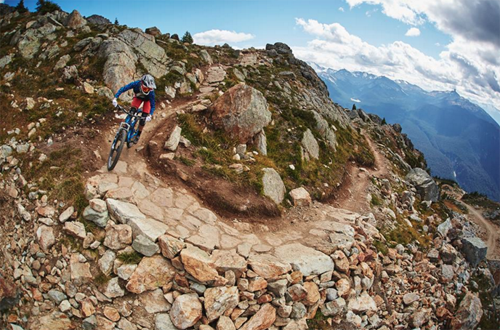
Photo by Laurence Crossman-Emms
Winter gets more than 11 metres of snow falls annually on more than 200 trails and five terrain parks accessed by 37 lifts. With the capacity to move close to 70,000 skiers and snowboarders per hour, the long lines of the 1970s are a distant memory.
It’s been a fabulous ride for Whistler Blackcomb. They continue to pull in awards year after year for everything from best resort to their environmental stewardship. Their goal is stay on top and go one step further. To offer the next generation a place to enjoy their sport - no matter what season.
When you go
For more information, head to the official Whistler Blackcomb website
Click here to see what you will be doing at Whistler Blackcomb.
Learn about "Feeder Hills", community ski areas that nurture new generations of skiers.
Show your stoke for the awesome history of Whistler Blackcomb by sharing this page with your friends!
Subscribe to SnowSeekers enews
For more of the snow stoke you love.

